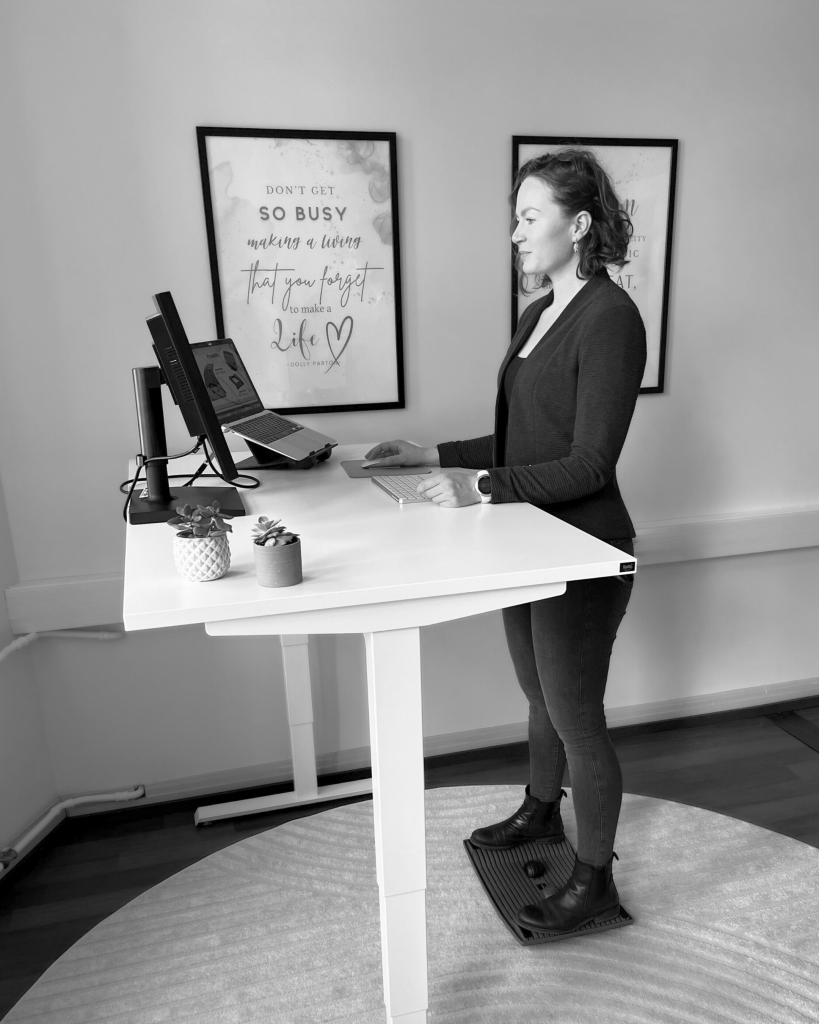The modern workplace has transformed dramatically over recent decades, but one element remains consistent: many of us spend most of our working hours sitting down. As our understanding of human physiology advances, we’re discovering that this sedentary approach to work doesn’t align with how our bodies are designed to function. Active workspaces, which encourage natural movement throughout the workday, aren’t just a wellness trend; they’re backed by substantial scientific evidence. This article explores the fascinating science behind active workspaces and how incorporating movement into your workday can improve your health, wellbeing, and productivity.
How sedentary work affects your body
Our bodies are designed for movement, not prolonged sitting. When we remain seated for extended periods, multiple physiological systems begin to slow down or function sub-optimally. The implications can be far-reaching and affect nearly every aspect of our physical health.
From a metabolic perspective, sitting for long periods causes our muscles to burn less fat and our blood to flow more sluggishly. This reduced metabolic activity is linked to elevated cholesterol levels and increased insulin resistance, which can contribute to type 2 diabetes over time. Even regular exercise cannot completely counteract the negative effects of prolonged sitting.
Musculoskeletal issues are perhaps the most immediately noticeable consequences. Poor posture during sitting places excessive pressure on the spine, particularly the lumbar region. This pressure, combined with muscle inactivity, contributes to chronic back pain, neck strain, and shoulder problems that affect millions of office workers worldwide.
Cardiovascular health also suffers during prolonged sitting. When we sit, blood flow slows, and the heart works less efficiently. Over time, this reduced circulatory activity is associated with higher blood pressure and an increased risk of cardiovascular disease.
What happens when you add movement to your workday?
Introducing regular movement into your workday can reverse many of the negative physiological effects of sedentary behaviour. Even small amounts of physical activity can trigger significant physiological responses that benefit your overall health.
When you stand and move, your muscles activate and contract, improving blood circulation throughout your body. This enhanced circulation delivers more oxygen and nutrients to your brain and other organs, while simultaneously helping to remove waste products more efficiently. Just two minutes of walking every hour can offset many of the harmful effects of sitting.
Movement also increases energy expenditure. While the calorie difference between sitting and standing might seem minimal at first glance (approximately 0.15 calories per minute), this adds up significantly over time. A person who stands for three additional hours each workday might burn about 30,000 extra calories over a year, equivalent to running about 10 marathons.
From a musculoskeletal perspective, changing positions regularly helps prevent the stiffness and pain associated with static postures. Movement lubricates joints, strengthens supporting muscles, and reduces the concentrated pressure on your spine that occurs during prolonged sitting.
The cognitive science of active workspaces
The benefits of active workspaces extend well beyond physical health. A growing body of research indicates that movement during the workday significantly enhances cognitive function and mental performance.
Physical activity increases blood flow to the brain, which delivers more oxygen and glucose, the primary energy sources for brain cells. This improved circulation has immediate effects on cognitive function, including enhanced alertness, attention, and information processing speed.
Movement also stimulates the release of brain-derived neurotrophic factor (BDNF) and other growth factors that support the health and functionality of brain cells. These chemicals promote neuroplasticity, the brain’s ability to form new neural connections and adapt to new information or challenges.
Perhaps most relevant to workplace performance is the relationship between physical movement and creativity. Research shows that walking can increase creative output by up to 60%, compared to sitting. This boost in creative thinking persists even after you’ve returned to a seated position, suggesting that incorporating regular movement breaks into your workday can enhance problem-solving abilities throughout the day.
Implementing active workspace habits
Creating an active workspace doesn’t require a complete office overhaul. Small, strategic changes can significantly increase your daily movement without disrupting productivity.
Start by establishing a sit-stand schedule. Begin with 30 minutes of standing every two hours, gradually increasing as your body adapts. Using a timer or calendar reminders can help maintain this schedule until it becomes habitual.
Incorporate micro-movements throughout your day. These might include:
- Calf raises while standing at your desk
- Gentle side-to-side weight shifts
- Shoulder rolls and neck stretches
- Periodic ankle rotations
Consider movement-friendly workspace adjustments. An ergonomic adjustable height desk solution such that allows for both sitting and standing positions is ideal. Adding balance boards for active standing workspaces or other active standing accessories can further increase muscle engagement while standing.
Make movement part of your workflow by identifying tasks that can be done while standing or walking. Phone calls, informal meetings, and creative brainstorming sessions often benefit from added movement.
Measuring the impact of workplace movement
To fully appreciate the benefits of an active workspace, it’s helpful to track changes in both objective health measures and subjective experiences.
Physical metrics you might monitor include daily step count, standing time, and basic health indicators like resting heart rate or blood pressure. Many fitness trackers and smartwatches can automatically record these metrics, providing useful baselines and progress reports.
For productivity and cognitive benefits, consider tracking:
- Energy levels throughout the day
- Ability to focus on complex tasks
- Creative output and problem-solving effectiveness
- Overall job satisfaction
A simple daily or weekly journal entry noting these factors can reveal patterns and improvements that might otherwise go unnoticed. Many workplace wellness programmes now include movement metrics as part of their overall assessment framework, recognising the strong connection between physical activity and workplace performance.
At Gymba, we understand the science behind active workspaces and have developed innovative solutions that make it easy to incorporate healthy movement into your workday. Our ergonomic laptop stands for improved posture and the activation board are designed based on this scientific understanding, helping you maintain better posture, increase daily movement, and improve overall wellbeing without disrupting your workflow. By making small but meaningful changes to how you work, you can experience the powerful benefits that come from aligning your workspace with your body’s natural need for movement.

